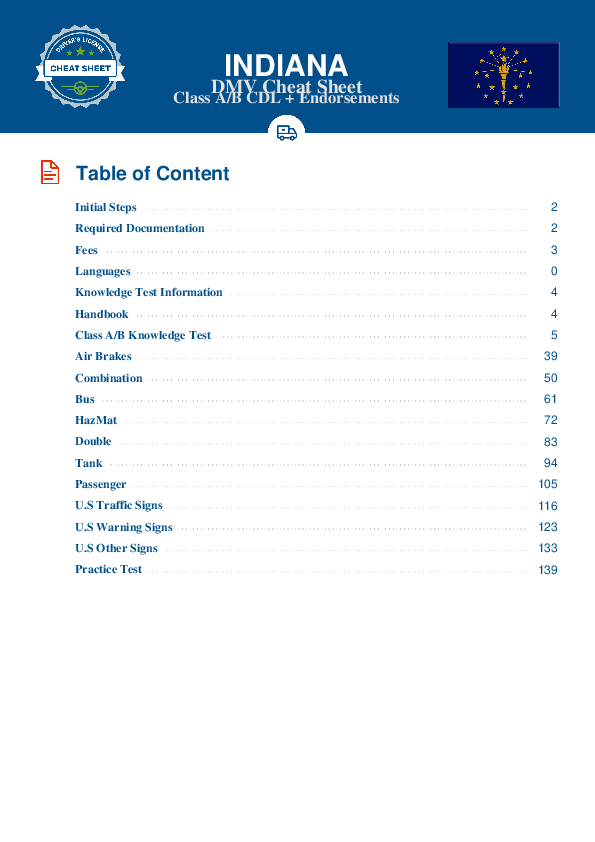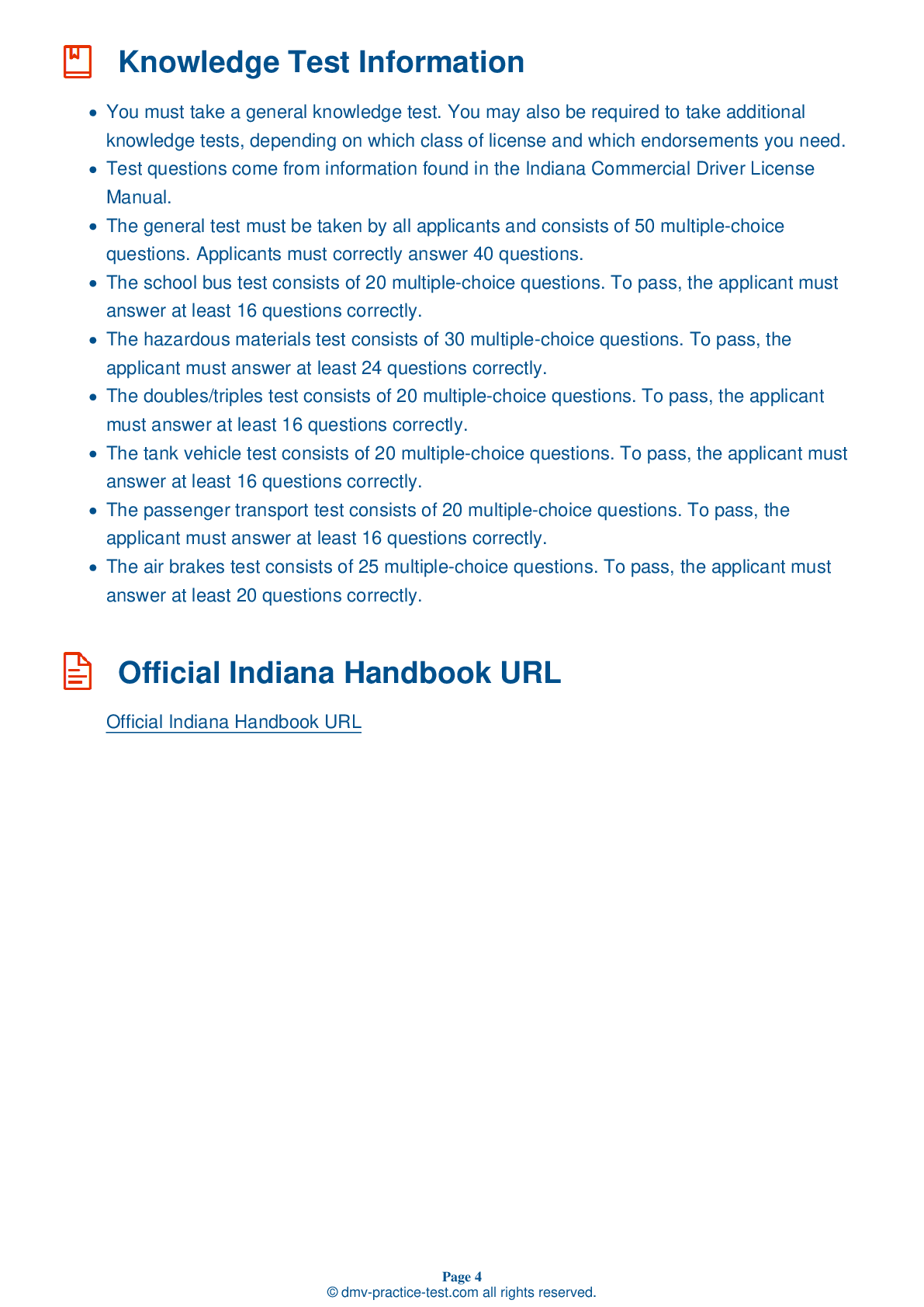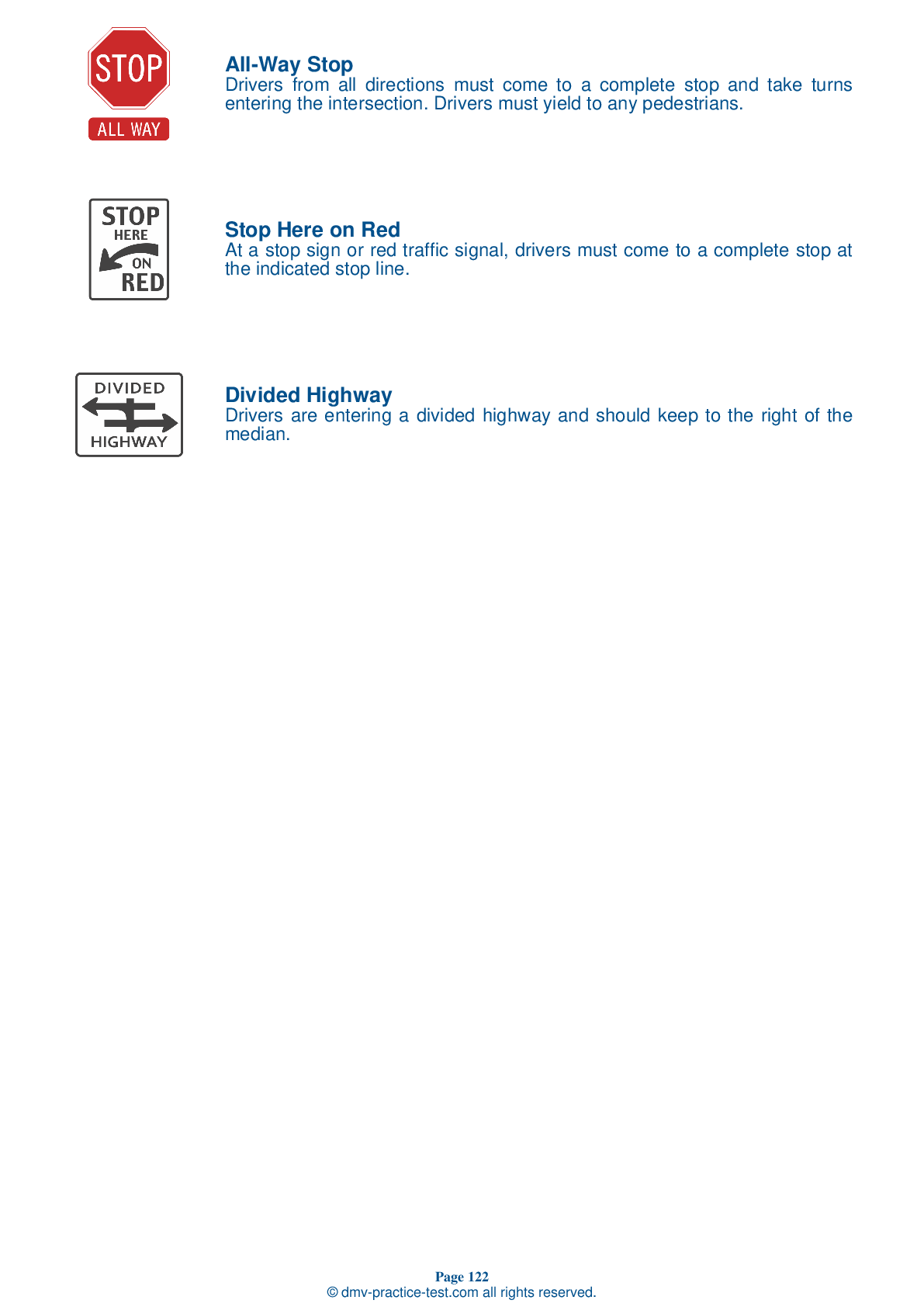Combination Vehicles Practice Test | Indiana 2025 #2 Page 2 of 3
Train for FREE online with our Indiana CDL combination vehicle test. The official exam test consists of several obligatory parts, with all of them checking your knowledge of different blocks of road rules. If you need to obtain a IN combination license in 2025, practice as much as possible. Free sample tests published on our website will help you check and improve your knowledge and boost your grades. Please bear in mind that DMV requirements for issuing a combination license may vary from state to state.
8 . To lower the risk of a rollover, you should:
To lower the risk of a rollover, load your cargo as closely to the ground as possible. To further reduce this risk, take curves and corners slowly.
9 . A shut-off valve:
Shut-off valves are used in air supply lines to control the passage of air from one trailer to another. The rear shut-off valve should always be closed to prevent air from leaving the braking system.
10 . What is a tractor protection valve?
In a combination vehicle with air brakes, the tractor protection valve keeps air in the tractor or truck brake system in the event of the trailer breaking away or developing a leak.
11 . A lightly-loaded combination vehicle will stop more slowly than a fully-loaded vehicle because:
An empty combination vehicle will come to a complete stop more slowly than a fully-loaded vehicle. The stiff suspension springs and strong brakes will have lower traction on a light trailer than they would if the vehicle carried more weight.
12 . Rollovers are most likely to happen when:
Rollovers happen when an operator turns too fast. Drivers should be sure to slow down before entering turns and curves, especially when transporting a fully-loaded rig.
13 . Operating a combination vehicle usually requires ____ operating a single vehicle.
Combination vehicles require more skill to drive than single vehicles. Combination vehicles are usually longer and heavier, and are more vulnerable to rollovers.
14 . After finishing a pre-trip inspection, you should:
Before a trip, you should ensure that air reaches all air brakes on all trailers by opening up the rear emergency line and service line shut-off valves to listen for escaping air. Close both shut-off valves before beginning to drive.
See the exact questions that will be on the 2025 Indiana DMV exam.
99.2% of people who use the cheat sheet pass the FIRST TIME
Lillian MCcranie explains how our CDL study guide was helpful in passing the exam and recommends it to everyone.
Cameron tells us how he purchased the CDL exam, and found it to be a useful tool which helped him pass the exam and find a job.



